#there's a whole section dedicated to giant squid
Text
absolutely loses my shit every time they film a giant squid alive gOD
#crying and screaming na dyelling#delete later#I blame search of the giant squid by richard ellis book that i read like#in highschool and I still have it and made giant squids one of my fav marine bio critters aooUUHGHHHHHH#wait fuck no I mean monsters of the sea#still by richard ellis#there's a whole section dedicated to giant squid
159 notes
·
View notes
Text
Octodad: Not-so-dark theory
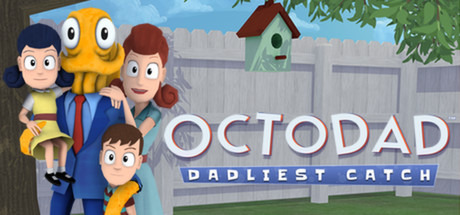
From top to bottom, Octodad looks like a fairly innocent game, A simple story about an Octopus trying to survive in suburbia. But, through subtle hints and references, and inconsistencies with that premise, it is revealed that Octodad is no mere cephalopod. He is, in fact, something far more horrifying, on paper at least... What do I mean?
Octodad is not, in truth, an Octopus, He's a Cthulhi. For those not familiar with the works of H.P. Lovecraft, Cthulhi are also called "The Starspawn of Cthulhu" and "Xothians," and are a race that looks like Cthulhu who's true origins, as with everything in the Cthulhu mythos, are debatable and vague as sin, the only things known for a fact are that they look like Cthulhu (Or, in their first appearance, like Octopi), worship him, followed him from their home dimension/universe into ours, and then perished en masse while what remained of them went into a death-like sleep, same as Cthulhu.

Now, Star Spawn aren't often seen in the works of Lovecraft, but they do have a sliver of popularity in the fandom. Not as big (in the popularity sense) as Deep Ones, but not as unknown as the humble Penguins of Leng. Now, again, it's worth noting that common interpretations of Star Spawn are basically baby Cthulhus, just tiny versions of their dark and malevolent master, but to start with, they were described as "a land race of beings shaped like octopi and probably corresponding to the fabulous pre-human spawn of Cthulhu," in the story "At the Mountains of Madness."
Octodad highly RESEMBLES an octopus, but with some interesting tweaks. Namely: His eyes, two of his Tentacles, and something we'll talk about in just a minute. But let's talk about Octodad's anatomy when compared to another octopus, namely, the one in the "Wold of kelp" at the Aquarium.

Now, this is Octopus is a giant, climbable sculpture one might see at a water park, so in a technical sense, some liberties could have been taken with its anatomy, but it looks semi-accurate to real octopi, down to the slit-like pupils and the tentacles all being at roughly the same spot despite them spreading out for kids to climb on. Now, if you pay attention, a patron of the Aquarium will note that the "World of kelp" was something else before it was the world of kelp, though they THINK it was "Squids or something" before. Based on how the section played out, I have to believe the whole affair was either cephalopods in general given how many bases of just kelp they went over, or just Octopi because HOLY CRAP there are lots of octopi out there. Failing that, I don't think the statue was a squid to begin with, the eyes are far too forward on the head, what can be seen of the tentacles makes them all look the same, and most species of squid have circular pupils and irises, not slits/rectangles.
Octodad, in contrast to the sculpture, has vertically ovular pupils, far rounder than the slits on the larger statue, on top of that, his eyes take up a slightly larger portion of his head. Then we take a look at Octodad's tentacles, namely the two that form his mustache. These two tentacles are set away from the other six in a way that makes no real anatomical sense for an octopus. Not to mention that the two are preposterously shorter than the others, it's less like another pair of tendrils and more like a strange growth coming out of the middle of his head. Moving on from that, there's also a certain disparity with his other limbs, his "arms" are shorter than his "legs" when he stands, however, when he enters water, his limbs, save for his mustache, are all of equal length, this strange effect carries over to when he's buck-ass naked, so no, he isn't just scrunching two up while he's in the suit... Speaking of naked octodad:

What the hell is that THING in the midst of his tentacles? It's a lighter color than the others, he's still using two tentacles per leg, one per arm, and his mustache is basically vestigial. Octodad's anatomy makes no fucking sense unless you consider the idea that he has some level of shapeshifting power... and wouldn't you know it, Cthulhi have just that. To what end is a little shakey, as with most things in the Lovecraft universe, but still.
Also worth noting is the church Octodad got married at, a Church dedicated, at least partly, to Cthulhu himself. Now, we only see one window with any kind of figure on it, Cthulhu, wereas the others are all decked out with a strange symbol, as are a few paintings lining the walls of it. These paintings may be of religious significance to the practitioners of this particular faith, but a lot of it looks like some minimalist "If you get it you get it" kind of stuff, and then one is literally a crayon drawing of a child with a smiling balloon. The last vaguely Lovecraftian thing in the church is the treasure chest Octodad gets his wife's ring from, all the coins within have a squid/cuttlefish-like creature printed on them, In the story "Shadow over Innsmouth," the people of a town called "Innsmouth" start breeding with fish people. They did it specifically for the undersea gold the fish people (called Deep Ones) give out for the service. Deep Ones worship multiple gods, cheif among them are their great parents, Mother Hydra and Father Dagon, though worship of Cthulhu isn't against their laws or anything.

The game takes a break from the hints of Eldrich horror while the family is at home, though it is worth noting that we don't REALLY know where Octodad's children came from. Hell, the game makes a joke about it at the end, Tommy asks, plain as day, "If dad's an octopus... Then where did me and Stacy come from?" While his parents laugh the question off, it has a few possible answers: The two of them (Or just Tommy) are leftover from a failed relationship/marriage Scarlet was a part of before Octodad came in, the two (Or just Tommy) are adopted, or, in a manner not dissimilar to deep ones, Cthulhi may just be able to breed with humans in this universe.

Now, I say Tommy may be adopted/Not Octodad's specifically because Stacy says something concerning in the "Deep sea" exhibit at the Aquarium. She apparently has dreams wherein a deep, dark spot in the ocean seems to call to her. This turns out to be a sea horse ranch. Cute as that is, dreams are a recurrent theme in Lovecraft's work, sometimes compelling people into the service of Great old ones like Gla'aki, for example. Or there was that one story when a guy met Yog-Sothoth, the omniscient and omnipresent god of the universe just because he dreamed that deeply. Also "The Dreamlands" are a place in Lovecraft's fiction. I could keep going down that rabbit hole, but I'm lazy and I think that point is made.
There is also another reference (Possibly) to "Shadow over Innsmouth" and "Dagon" with the character of Chef Fujimoto. Now, Fujimoto himself is not a reference to anything in particular, but his backstory has some Lovecrafty bits. Namely, Fujimoto was once a soldier (Dagon) who cut open a combatant. Instead of human guts, "Piles of fish" were inside. (Shadow over Innsmouth.) This one might be a little more of a stretch but remember that Fujimoto is OBSESSED with Octodad and believes very firmly that there are fish people everywhere. ("Why is everyone fish!?") There are several Lovecraftian stories where the character feels he is being pursued or is surrounded in some way. Call of Cthulhu ends with one of the characters feeling that the cult is gunning for him, partly because some dude looked at him funny, and Dagon ended with the main character fearing that a servent of Dagon was coming up his stairs after him, so he threw himself out a window. The crippling paranoia experienced by Fujimoto is another hint that SOMETHING Eldrich is happening in the universe of Octodad.
Also worth noting is that a magazine entitled "Inquisitor" can be found at Gervason's, Octodad is on the cover, and they think he's an alien. Which begs the question: Why is it that most humans will let an obviously strange man do things without much concern at all? Hell, there are three lines present in both the main game and one of the extra shorts that imply EVERYONE sees something is wrong with Octodad. And I quote/paraphrase:
"I thought he was a lawyer?" "He's slimy enough to be one."
"Is it just me or did the captain look jigglier than usual?"
"Hmmm, I don't see a blurblerulb on the list."
These lines imply on some level that people recognize SOMETHING is wrong or different with Octodad but they don't carry the thought far enough to do anything with it... Unless perhaps at a distance, hence that cover of “Inquisitor.”
Another thing that tends to happen in Lovecraftian horror is the mind not making proper sense of things. For example: Canonically in the mythos, the image of Cthulhu mankind sees, humanoid body, octopus head, draconic wings, etc, is not what he really looks like, it's just our perception of Cthulhu because our minds aren't equipped to comprehend the real deal. Looking too long at just what we can see of Cthulhu will unravel your mind, causing both insanity and death if exposed even longer. I think that's part of Octodad's effect. When he's dressed, the humans around him perceive what their mind makes sense of. He's in a shirt and pants, therefore he is appropriately dressed as a human, therefore their minds SEE a human even if he's not QUITE right. We see, rather obviously, that he doesn't have human hands, he has tentacles with suckers, but Scarlet refers to it as a "Hand" still, this implies she and others see his appendages as hands or feet when he's disguised or doing something "Human enough." Only really undone if he's naked or does too many strange or seemingly malicious things like accidentally smack someone with a bag of doughnuts.
This is why you can get away with randomly dragging things across the floor, their minds are telling them something is a little off, but their ability to perceive might be telling them he's just got a medical condition or something. It's nothing to judge him for, he's just got a disability.
So at the end of that trail, what are we left with? Octodad as a Xothian/Deep one hybrid? Does that fundamentally change the game's story? Does this mean Octodad is a dark horror from beyond? Does he secretly seek to kill and maim and destroy all the things we hold dear? Will he one day help awaken Cthulhu and usher in the new age of the great old ones? No. See, Octodad, despite his horrifying inspirations, is a benevolent creature. He "blubs with a love for all mankind" in the ending for Dadliest Catch. He still obviously loves and cares for his family, whether they know his secret or not. He's just an alien from another dimension... or at least he has ancestry from another dimension.
Now, why is that? I've got two little ideas for that: It's an often found interpretation that most of the original writings of Lovecraft focus on the idea that "It is different, therefore it is bad." Xenophobia of an extremely high sort. Mind you, I often find this interpretation lacking, but we can probably discuss that later. I feel Octodad may be a natural extrapolation of the idea that it isn't bad because it's different, in fact, Octodad, despite keeping a secret, is an all-around "good" guy. Upstanding, moral, all that garbage, he just happens to be non-human.
Something supporting this being a running theme is the scene with the Snugglefish. For those who have yet to play Dadliest catch, a section of the game takes place when the power in part of the Aquarium goes partially out. During this event, Octodad and Stacy come upon a large sculpture of a creature called a “Snugglefish.” which is covered by the dark. We shine lights at the supposedly malevolent creature, complete with monstrous teeth and evil red eyes, partially with the intent to “Blind it” despite the fact that its obviously a statue. That whole section up to then is nothing but fumbling in the dark, looking at the strange and some might say “alien” life living in the deep ocean, you can also learn some stuff about them if you pay attention.
The whole thing ends when you fully light up the spots on the statue, revealing it to BE a Snuggle fish as opposed to some giant monster. As a result of revealing this, Stacy’s fears of it go right out and she feels she understands the creature better, as with most things, learning and understanding quiet one’s fears. when we learn what something is, we stop seeing it as an immediate threat is the take away from that section, I think, which is, again, I’d say, a call to Lovecraft's writings and his fear of that which was different and unknown and how it’s so easily thrown out with just a LITTLE understanding.

Another plausible explanation for Octodad’s kindness may be that Octodad is not a Star Spawn of Cthulhu, but of Kthanid. Kthanid is not an original creation of H.P. Lovecraft, but a bloke by the name of "Brian Lumley." Lumley's creation is the brother of Cthulhu, and is considered the main reason Cthulhu is sealed away these days. Kthanid is said to look almost exactly like Cthulhu but to have "Golden eyes that radiate peace." He's a loving, benevolent "Elder God" that wants the best for not just Humanity, but for all things. It would logically follow that if a creature dedicated itself to Kthanid, or was one of his spawn, it would be at least mostly as loving and kind. So, if Octodad, or "blurblerulb" if you prefer, was a purely hypothetical Kthani instead of Cthulhi, his disposition may well fit within the actual mythos.

So, what do y'all think? Does this theory hold water? Or does it sink harder than Cthulhu going back down for a nap?
#Octodad#Dadliest Catch#Tommy#Stacy#Scarlet#Chef Fujimoto#Cthulhu#Lovecraft#Kthanid#Xothians#star spawn#cthulhi#Deep Ones
116 notes
·
View notes
Text
Breath of the Wild Story theory/prediction
Breath of the Wild Plot predictions!
We’re going to do something a little different today. A wealth of information along with a new trailer was revealed at the Switch event last week. Instead of a trailer breakdown, I think we have enough info to piece together large chunks of the game’s plot.
First, we have to start before the game begins. 100 Years ago. Potential spoilers incoming.
Breath of the Wild chronicles two tales, one in the past, the other in the present, and how they’re connected as Link struggles to save Hyrule and his friend, Princess Zelda.

Recently, several dedicated translators in the Zelda community took to analyzing one of the special pieces of merchandise in the Master edition of Breath of the Wild. They were able to pull this text from it.
“Hylians pass stories of a destined time long past where multiple races lived and worked together in harmony. The Sheikah Tribe's blue aura breathed through the land and this mutual prosperity continued until a cataclysmic disaster stuck. The Hero and the Princess attempted to seal the terror which became known as the Calamity Ganon. Divine beasts awoke from four directions and deployed a mechanical army which made the King and his people fearful. They fractured Ganon's power and sealed him, but the Sheikah were banished from the land ever since.”
So this is a pretty good outline of the backstory right here. The “Guardians” were deployed to defend Hyrule after Ganon’s rise to power. Something went wrong though, judging by the purple aura that coats them instead of the blue aura that coats the machines that actually help Link, they’ve been corrupted by Ganondorf’s power, so releasing them has turned out to be a huge mistake. They engage Link on sight, able to kill him in two hits and he’s a warrior. Imagine what it could do to the average Hylian.
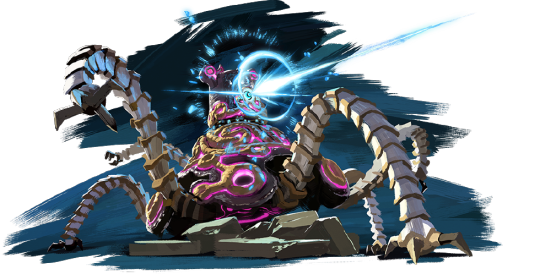
Now, the sheikah were banished after this, which probably wasn’t the wisest move considering they probably knew a thing or two about how to turn the damn things off, but I guess if someone unleashed an army of giant robot squids on me I’d be a little pissed too. What became of the Hero and the princess however? Link was obviously put away in the chamber after a brutal battle, and there are more than a few hints that Zelda resides in the castle. I think Breath of the Wild will at least spend part of it’s time chronicling how they got to that point.
So, you might ask what was with all those scenes featuring Link and Zelda together? They all take place in the past. Every scene in that trailer featuring Zelda takes place in the past.
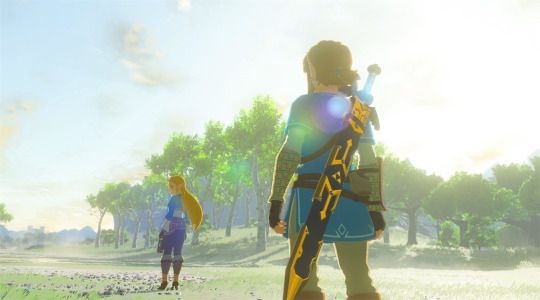
Link and Zelda went on a journey together to seal Ganon long ago, but eventually they’re run down by Ganon’s forces and the Guardians, and Link is defeated soundly. Zelda takes Link to the chamber of resurrection for healing, before sealing Ganon in the castle herself.
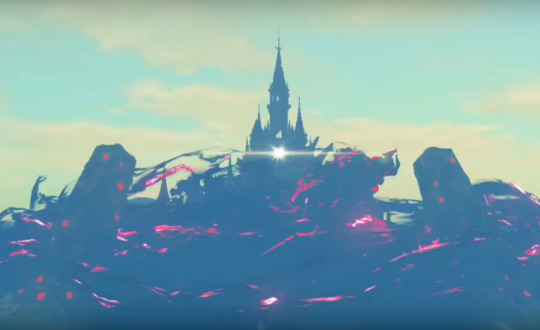
Now, with all that backstory stuff out of the way, we get to the main story. As we know, there are 4 giant beasts on the map, and they correspond to some of the monsters we see in the trailer. These are apparently the same beasts that sealed ganon, so Link will have to defeat or deactivate them, weaken the seal, and kill Ganon himself, freeing Zelda in the process. The four riders will be the characters featured in the new trailer rocking the same blue as Link and Zelda. They may even be considered sages like in previous titles.
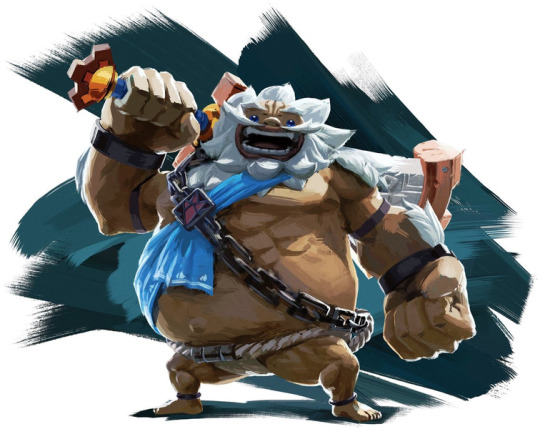
I say their story will largely be featured in a flashback because the in game menu has a dedicated section for them. This backs up Aonuma’s statement that you can finish the game without knowing what happened to Link. It’s a collectible you have to find. Players who don’t find it at all and manage to complete the game anyway will still get to meet Zelda, but they’ll meet her without their memories, which will shape the ending in some way.
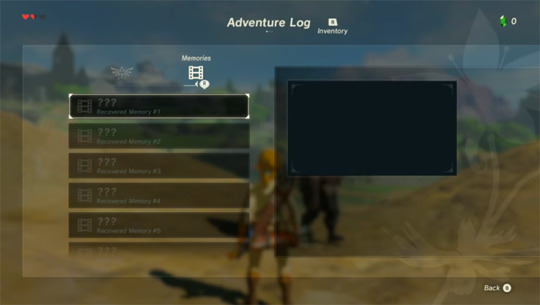
Now, this all sounds a little unstable, but one big clue to this is the Sheikah slate, and how the trailers and art emphasize the fact that Zelda is the one who has it. I figured originally there could be more than one, but now I think it belonged to Zelda and she left it there for him. She has it in the trailers because it was her main means of defending herself and navigating, but she knows Link will need it and leaves it with him. It connects the two in a big way.
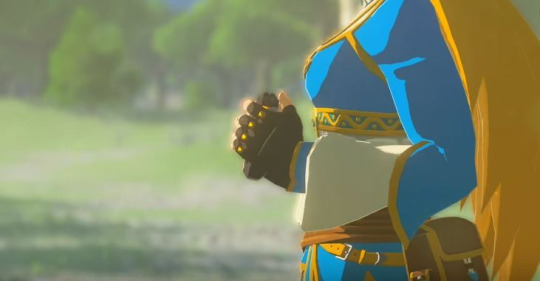
There are still a few holes in this theory. One of most common theories about the old man featured in demo footage is that he’s actually the king of hyrule, but if this is a conflict that began 100 years ago, how could he still possibly be alive? Magic? Is it even the king at all?
Zelda also changes outfits a lot in the trailer from a more regal one to an adventure garb similar to Link, giving the impression that she has a role in the past and the present, or at the very least there’s a significant gap between the two moments in time.. That could easily be the case and this whole theory could be wrong, but we’ll see.
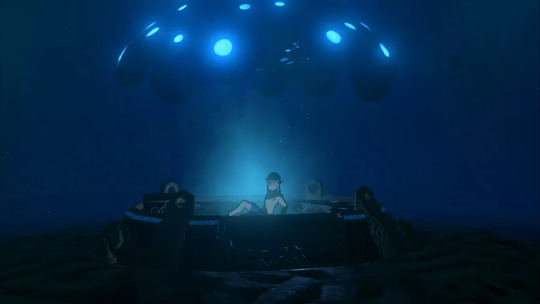
That’s about all I’ve got for today. We’ll see what happens on March 3rd. What do you think of the theory? If I’ve missed something, let me know.
#breath of the wild#the legend of zelda#the legend of zelda: breath of the wild#spoilers#theory#zelda
17 notes
·
View notes
Text
London is going all butterbeer over 20th anniversary of Harry Potter
LONDON – Do you know which Harry Potter characters share their names with ancient constellations? What’s the incantation for the levitating charm? Do you know your Bowtruckles from your Basilisks?
Because there will be a trivia test.
It has been 20 years since J.K. Rowling charmed readers of all ages with the publication of the first Harry Potter book, and it seems many of us are still spellbound.
To mark the anniversary, the British Library has swung open its doors for “Harry Potter: A History of Magic,” a new exhibition that explores the history behind the wizarding world.
Others, too, are paying tribute. On June 26 – exactly 20 years to the day since the first book was published in the United Kingdom – Harry Potter was trending worldwide on social media. On Saturday evening, the BBC aired a documentary that includes a rare interview with Rowling. Before, during and after Halloween, millennials are slipping on robes and raising a celebratory pint to the boy wizard they grew up with at unofficial Harry Potter pub crawls (combining two of Britain’s popular pastimes: drinking and dressing up in costumes.)
Not that it takes much to motivate Potter enthusiasts. Last month, for instance, thousands of Muggles descended on Platform 9¾ at King’s Cross station to mark the day that Harry Potter’s son Albus left for Hogwarts. For those truly potty about Potter, there is the “Making of Harry Potter” studio tour, next to the film studios where all eight films were made, which in the lead-up to Halloween is hosting feasts in the “Great Hall” with pumpkins and cauldrons full of lollipops.
The latest draw is the exhibition at the British Library, which sold a record 30,000 tickets even before its opening last week.
The show delves into the historical links with the fantastical world dreamed up by Rowling – who studied classics and French at university – by exploring the wider cultural context in which the books are set. For those able to harness their inner Hermione, the library is hosting “quiz nights” to test visitors on their wizarding knowledge.
Perhaps the most exciting aspect for fans is the scores of items donated by Rowling herself, including original handwritten extracts from various Potter books with lines crossed out and annotations from the author.
There are also a number of intricate drawings (yes, she can draw). For instance, there is a map of Hogwarts School of Witchcraft and Wizardry, complete with a Quidditch field, a lake with a giant squid and a whomping willow tree that she writes on the paper “must stand out.” Another note shows her pondering different ways students could be sorted into the houses at Hogwarts – including ghosts, a riddle, statues or a “sorting hat” that she sketches along with a song.
Many of her items are dated from before she found a publisher – she was turned down eight times before Bloomsbury took a chance on her – and they illustrate just how vivid and richly imagined the Harry Potter-verse was from a very early stage, complete with its own consistent logic and rules.
The “first review” of her work is also on display. Alice Newton, the 8-year-old daughter of the founder of Bloomsbury, wrote on a piece of paper: “The excitement in this book made me feel warm inside. I think it is possibly one of the best books an 8/9 year old could read.” The day after she penned the note, Bloomsbury agreed to publish “Harry Potter and the Philosopher’s Stone.”
Related Articles
October 24, 2017 Klain: He who must be named
October 15, 2017 Hogwarts Express rescues stranded family in Scotland
October 10, 2017 Jennifer Lawrence as a picnic table, Jim Gaffigan as Captain Morgan: How celebs do Halloween
The exhibit is lined with book wallpaper and is dimly lit. Cauldrons and tea cups “float” from the ceiling, and an invisibility cloak is, apparently, hanging from a hook. It’s organized by the school curriculum at Hogwarts, so visitors explore rooms dedicated to subjects including potions, herbology, divination, astronomy and defense against the dark arts.
The potions room, for instance, features the Ripley Scroll, a 20-foot-long manuscript from the 1500s that is a kind of instruction guide on how to create a philosopher’s stone, a substance that reputedly could turn base metals into gold and grant eternal life.
“It helps bring stories to life to see the real concepts behind them,” said Alexander Lock, a mustachioed historian and one of the curators of the exhibit.
Leaning over the glass case containing the scroll, Lock pointed to an image depicting a black stone, a white stone and a red stone. He noted that Sirius’ last name is Black, and that Albus (Dumbledore) is Latin for white and Rubeus (Hagrid) is Latin for red.
The scroll is displayed alongside the tombstone of Nicholas Flamel, a name shared by a character in the first Harry Potter book. On loan from the Musée de Cluny in Paris, the headstone was reportedly found in the 19th century at a Parisian grocery store where it was being used as a chopping board.
The real-life Flamel was a Parisian landlord and bookdealer who died in 1418. After his death, rumors surfaced that he was an alchemist – his work was referenced by Isaac Newton – who had unlocked the secret to creating a philosopher’s stone.
“I heard when they extracted (Flamel’s) tombstone, they didn’t actually find a body, so it could well be true,” said Lock, smiling.
In addition to borrowing artifacts from other museums, the library draws on its own rich collection to display ancient books like “Liber Medicinalis,” which features the earliest recorded use of “abracadabra,” a charm thought to have healing powers.
In the herbology section, there are ancient manuscripts on mandrakes, plants with roots that look humanlike. In “Harry Potter and the Chamber of Secrets,” Professor Sprout asks her students to wear earmuffs when replanting baby mandrakes because of their insanely loud cries.
Indeed, it was long believed that when the root of the plant was yanked from the ground, it would scream and kill anyone who heard it. According to a 15th century book on display, the recommended way of harvesting mandrakes included the use of a horn to drown out the shrieking.
In the astronomy room, which is dominated by a 400-year-old celestial globe, visitors discover the constellations that share names with characters in the book, including Bellatrix LeStrange and Sirius Black.
Keen stargazers will know that the brightest star in the night sky is called Sirius, also known as the Dog Star.
The reviews so far have been generally strong, with many critics noting the breadth of material on display. Some have said that it doesn’t “hang together” as a whole or that younger children may become “fidgety” near the end – but most agree that Potter fans will gobble it up.
For her part, Rowling said it was “wonderful” and appeared to be particularly taken by the tombstone of one of her characters. She tweeted a picture of it with the caption: “Guess what this is? I’ve just seen it and was mesmerised …”
All of this is fair game for the Harry Potter quiz night. If you do portkey over to London and find yourself participating in one, facts that may come in handy: Draco Malfoy and Remus Lupin also share their names with the constellations; Wing-gar-dium Levi-o-sa is the spell for levitation; and a Bowtruckle and a Basilisk are very different creatures.
“Harry Potter: A History of Magic” is at the British Library until the end of February 2018. It transfers to New York’s Historical Society next October.
from News And Updates http://www.denverpost.com/2017/10/29/london-going-all-butterbeer-over-20th-anniversary-harry-potter/
0 notes
Text
London is going all butterbeer over 20th anniversary of Harry Potter
LONDON – Do you know which Harry Potter characters share their names with ancient constellations? What’s the incantation for the levitating charm? Do you know your Bowtruckles from your Basilisks?
Because there will be a trivia test.
It has been 20 years since J.K. Rowling charmed readers of all ages with the publication of the first Harry Potter book, and it seems many of us are still spellbound.
To mark the anniversary, the British Library has swung open its doors for “Harry Potter: A History of Magic,” a new exhibition that explores the history behind the wizarding world.
Others, too, are paying tribute. On June 26 – exactly 20 years to the day since the first book was published in the United Kingdom – Harry Potter was trending worldwide on social media. On Saturday evening, the BBC aired a documentary that includes a rare interview with Rowling. Before, during and after Halloween, millennials are slipping on robes and raising a celebratory pint to the boy wizard they grew up with at unofficial Harry Potter pub crawls (combining two of Britain’s popular pastimes: drinking and dressing up in costumes.)
Not that it takes much to motivate Potter enthusiasts. Last month, for instance, thousands of Muggles descended on Platform 9¾ at King’s Cross station to mark the day that Harry Potter’s son Albus left for Hogwarts. For those truly potty about Potter, there is the “Making of Harry Potter” studio tour, next to the film studios where all eight films were made, which in the lead-up to Halloween is hosting feasts in the “Great Hall” with pumpkins and cauldrons full of lollipops.
The latest draw is the exhibition at the British Library, which sold a record 30,000 tickets even before its opening last week.
The show delves into the historical links with the fantastical world dreamed up by Rowling – who studied classics and French at university – by exploring the wider cultural context in which the books are set. For those able to harness their inner Hermione, the library is hosting “quiz nights” to test visitors on their wizarding knowledge.
Perhaps the most exciting aspect for fans is the scores of items donated by Rowling herself, including original handwritten extracts from various Potter books with lines crossed out and annotations from the author.
There are also a number of intricate drawings (yes, she can draw). For instance, there is a map of Hogwarts School of Witchcraft and Wizardry, complete with a Quidditch field, a lake with a giant squid and a whomping willow tree that she writes on the paper “must stand out.” Another note shows her pondering different ways students could be sorted into the houses at Hogwarts – including ghosts, a riddle, statues or a “sorting hat” that she sketches along with a song.
Many of her items are dated from before she found a publisher – she was turned down eight times before Bloomsbury took a chance on her – and they illustrate just how vivid and richly imagined the Harry Potter-verse was from a very early stage, complete with its own consistent logic and rules.
The “first review” of her work is also on display. Alice Newton, the 8-year-old daughter of the founder of Bloomsbury, wrote on a piece of paper: “The excitement in this book made me feel warm inside. I think it is possibly one of the best books an 8/9 year old could read.” The day after she penned the note, Bloomsbury agreed to publish “Harry Potter and the Philosopher’s Stone.”
Related Articles
October 24, 2017 Klain: He who must be named
October 15, 2017 Hogwarts Express rescues stranded family in Scotland
October 10, 2017 Jennifer Lawrence as a picnic table, Jim Gaffigan as Captain Morgan: How celebs do Halloween
The exhibit is lined with book wallpaper and is dimly lit. Cauldrons and tea cups “float” from the ceiling, and an invisibility cloak is, apparently, hanging from a hook. It’s organized by the school curriculum at Hogwarts, so visitors explore rooms dedicated to subjects including potions, herbology, divination, astronomy and defense against the dark arts.
The potions room, for instance, features the Ripley Scroll, a 20-foot-long manuscript from the 1500s that is a kind of instruction guide on how to create a philosopher’s stone, a substance that reputedly could turn base metals into gold and grant eternal life.
“It helps bring stories to life to see the real concepts behind them,” said Alexander Lock, a mustachioed historian and one of the curators of the exhibit.
Leaning over the glass case containing the scroll, Lock pointed to an image depicting a black stone, a white stone and a red stone. He noted that Sirius’ last name is Black, and that Albus (Dumbledore) is Latin for white and Rubeus (Hagrid) is Latin for red.
The scroll is displayed alongside the tombstone of Nicholas Flamel, a name shared by a character in the first Harry Potter book. On loan from the Musée de Cluny in Paris, the headstone was reportedly found in the 19th century at a Parisian grocery store where it was being used as a chopping board.
The real-life Flamel was a Parisian landlord and bookdealer who died in 1418. After his death, rumors surfaced that he was an alchemist – his work was referenced by Isaac Newton – who had unlocked the secret to creating a philosopher’s stone.
“I heard when they extracted (Flamel’s) tombstone, they didn’t actually find a body, so it could well be true,” said Lock, smiling.
In addition to borrowing artifacts from other museums, the library draws on its own rich collection to display ancient books like “Liber Medicinalis,” which features the earliest recorded use of “abracadabra,” a charm thought to have healing powers.
In the herbology section, there are ancient manuscripts on mandrakes, plants with roots that look humanlike. In “Harry Potter and the Chamber of Secrets,” Professor Sprout asks her students to wear earmuffs when replanting baby mandrakes because of their insanely loud cries.
Indeed, it was long believed that when the root of the plant was yanked from the ground, it would scream and kill anyone who heard it. According to a 15th century book on display, the recommended way of harvesting mandrakes included the use of a horn to drown out the shrieking.
In the astronomy room, which is dominated by a 400-year-old celestial globe, visitors discover the constellations that share names with characters in the book, including Bellatrix LeStrange and Sirius Black.
Keen stargazers will know that the brightest star in the night sky is called Sirius, also known as the Dog Star.
The reviews so far have been generally strong, with many critics noting the breadth of material on display. Some have said that it doesn’t “hang together” as a whole or that younger children may become “fidgety” near the end – but most agree that Potter fans will gobble it up.
For her part, Rowling said it was “wonderful” and appeared to be particularly taken by the tombstone of one of her characters. She tweeted a picture of it with the caption: “Guess what this is? I’ve just seen it and was mesmerised …”
All of this is fair game for the Harry Potter quiz night. If you do portkey over to London and find yourself participating in one, facts that may come in handy: Draco Malfoy and Remus Lupin also share their names with the constellations; Wing-gar-dium Levi-o-sa is the spell for levitation; and a Bowtruckle and a Basilisk are very different creatures.
“Harry Potter: A History of Magic” is at the British Library until the end of February 2018. It transfers to New York’s Historical Society next October.
from Latest Information http://www.denverpost.com/2017/10/29/london-going-all-butterbeer-over-20th-anniversary-harry-potter/
0 notes